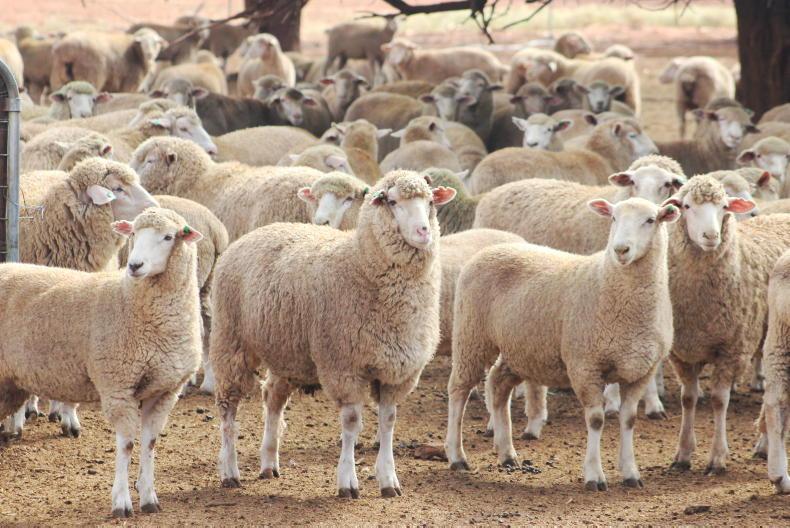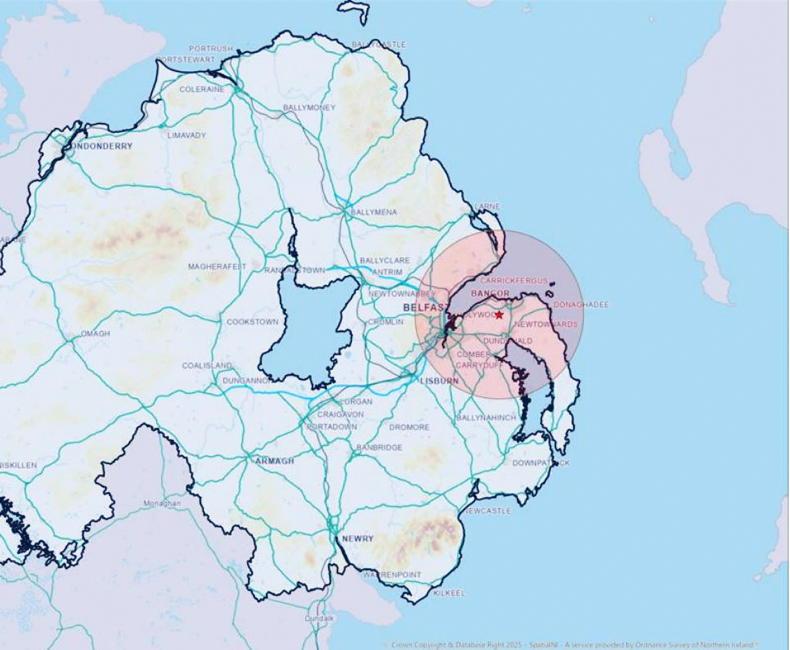This week, Bord Bia revealed another hugely successful year for Irish food and drink exports.
Most of these originate on Irish farms where cows are milked, calves, lambs, pigs and poultry are reared and crops are sown and harvested.
This is the raw material that is the foundation on which processors build a business adding value to this and exporting 90% of total production to markets around the world.
This all didn’t happen by accident. Historically, Ireland exported farm produce without adding value, but it was only with the collapse of the Celtic Tiger that a real strategy for growth was put in place with Food Harvest 2020.
The decade to 2020 coincided with the ending of milk quotas and opening of meat markets around the world and by the end of that decade, the wider economy had recovered and the focus switched from maximising output from Irish farms and industry to sustainability and environmental protection.
As a result, volumes of sheepmeat and dairy exports fell in 2024, while beef volumes were sustained by a high cull, which doesn’t auger well for future beef production.
Dairy and pigmeat global
As for the markets served, while dairy and pigmeat are well diversified globally, beef and sheepmeat are still very much anchored in the UK and wider European markets.
A decade ago, Irish beef relaunched in the US with great expectations of that becoming a major market.
Huge effort was invested in getting China open, which eventually happened in 2018, right in the middle of the period when its beef imports expanded rapidly.
However, neither of these markets really took off. The US was never going to be an importer of high-value beef cuts, that is a product that it exports up to 1m tonnes of annually.
It also imports over one million tonnes of beef each year, but that is predominantly forequarter manufacturing beef.
Irish beef exports to the US did reach almost 10,000t in 2020, but have since fallen back, though they did improve in 2024.
As for China, after a promising start, beef exports have been suspended because of random BSE cases and it now seems that whatever opportunity that market may have presented, it won't be realised.
While wider global markets may not have delivered for beef, they have been lucrative for dairy and pigmeat.
Irish butter to the US is a real success story, though the risk of tariffs from the incoming Trump administration puts something of a cloud over it for the coming years.
For beef, there was huge concern with Brexit that the UK market - which Ireland is so dependent on - would be seriously undermined.
So far, this hasn’t happened and, in 2024, was more lucrative than ever, leading to record Irish beef prices, even if they were well behind what UK farmers were getting for the same product.
Long-term issues
Longer-term concerns may remain, as more Australian and New Zealand product make their way on to that market, but the shrinking of the UK cattle herd and ability of Irish beef exports to seamlessly slot into UK just-in-time supply chains will mean an ongoing Irish competitive advantage.
Mainland Europe has also delivered in 2024 for Irish beef and sheepmeat and, again, with longer-term forecasts suggesting declining cattle and sheep numbers, it should be an ongoing market opportunity.
A Mercosur trade deal and possible change by China on import policy are a risk that is beyond the control of farmers or the wider industry.
Irish farmers and the wider industry have faced plenty of challenges over recent years.
Prices are reasonable for milk, beef and sheepmeat, though less so for tillage farmers.
In general, farm incomes outside of dairy remain a concern and production is likely to be more difficult in the years ahead to comply with emissions and environmental controls.
Farmgate values have improved, but they need to keep improving to move farmers towards economic sustainability and enable them to continue producing the raw material on which our food and drink processors prosper.
Read more
Challenges and opportunities for agri-food exports
Rising prices lift Irish food and drink exports to €17bn for 2024
Export market change - real and present
This week, Bord Bia revealed another hugely successful year for Irish food and drink exports.
Most of these originate on Irish farms where cows are milked, calves, lambs, pigs and poultry are reared and crops are sown and harvested.
This is the raw material that is the foundation on which processors build a business adding value to this and exporting 90% of total production to markets around the world.
This all didn’t happen by accident. Historically, Ireland exported farm produce without adding value, but it was only with the collapse of the Celtic Tiger that a real strategy for growth was put in place with Food Harvest 2020.
The decade to 2020 coincided with the ending of milk quotas and opening of meat markets around the world and by the end of that decade, the wider economy had recovered and the focus switched from maximising output from Irish farms and industry to sustainability and environmental protection.
As a result, volumes of sheepmeat and dairy exports fell in 2024, while beef volumes were sustained by a high cull, which doesn’t auger well for future beef production.
Dairy and pigmeat global
As for the markets served, while dairy and pigmeat are well diversified globally, beef and sheepmeat are still very much anchored in the UK and wider European markets.
A decade ago, Irish beef relaunched in the US with great expectations of that becoming a major market.
Huge effort was invested in getting China open, which eventually happened in 2018, right in the middle of the period when its beef imports expanded rapidly.
However, neither of these markets really took off. The US was never going to be an importer of high-value beef cuts, that is a product that it exports up to 1m tonnes of annually.
It also imports over one million tonnes of beef each year, but that is predominantly forequarter manufacturing beef.
Irish beef exports to the US did reach almost 10,000t in 2020, but have since fallen back, though they did improve in 2024.
As for China, after a promising start, beef exports have been suspended because of random BSE cases and it now seems that whatever opportunity that market may have presented, it won't be realised.
While wider global markets may not have delivered for beef, they have been lucrative for dairy and pigmeat.
Irish butter to the US is a real success story, though the risk of tariffs from the incoming Trump administration puts something of a cloud over it for the coming years.
For beef, there was huge concern with Brexit that the UK market - which Ireland is so dependent on - would be seriously undermined.
So far, this hasn’t happened and, in 2024, was more lucrative than ever, leading to record Irish beef prices, even if they were well behind what UK farmers were getting for the same product.
Long-term issues
Longer-term concerns may remain, as more Australian and New Zealand product make their way on to that market, but the shrinking of the UK cattle herd and ability of Irish beef exports to seamlessly slot into UK just-in-time supply chains will mean an ongoing Irish competitive advantage.
Mainland Europe has also delivered in 2024 for Irish beef and sheepmeat and, again, with longer-term forecasts suggesting declining cattle and sheep numbers, it should be an ongoing market opportunity.
A Mercosur trade deal and possible change by China on import policy are a risk that is beyond the control of farmers or the wider industry.
Irish farmers and the wider industry have faced plenty of challenges over recent years.
Prices are reasonable for milk, beef and sheepmeat, though less so for tillage farmers.
In general, farm incomes outside of dairy remain a concern and production is likely to be more difficult in the years ahead to comply with emissions and environmental controls.
Farmgate values have improved, but they need to keep improving to move farmers towards economic sustainability and enable them to continue producing the raw material on which our food and drink processors prosper.
Read more
Challenges and opportunities for agri-food exports
Rising prices lift Irish food and drink exports to €17bn for 2024
Export market change - real and present










SHARING OPTIONS